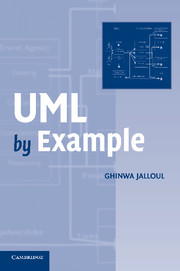6 - Math Tutor: Case Study 4
Published online by Cambridge University Press: 05 June 2012
Summary
This case study was developed following the bridge process with a simple modification. The description of user requirements is rather simple but it is complemented with a detailed description of all stages that the application goes through and it proves to be useful in advanced phases of the target system design. The initial use case model is very simple, whereas the second version of the use case model exhibit “uses” relations that are worth examining. The object model exhibits inheritance and aggregation relations. Details of traceability and other details that lead to formation of the models are left as a challenge to the reader in the exercise section at the end of the chapter.
INCEPTION
USER REQUIREMENTS
Math tutor is an application that educates and trains students in lower level classes in mathematics. The application supports two levels (medium and high) of competency, where each level contains several stages that students have to complete to move across levels. To move from one level to another, a student has to achieve a certain score. Scores are gained during lessons. Each lesson consists of two parts: practice and an evaluation quiz. The student collects his/her score from the first part of each lesson. Each successful level is followed by a game or song in order to motivate the student.
Description 6-1. Tutor user requirements
Detailed Description of Stages
When starting the application, the student has two choices:
1. The user chooses to take consecutive lessons. The user will start from the lowest level (level 1) and go consecutively through all the lessons of each of levels 1 and 2. In this case, the user will not receive any prize.
[…]
- Type
- Chapter
- Information
- UML by Example , pp. 192 - 207Publisher: Cambridge University PressPrint publication year: 2004

